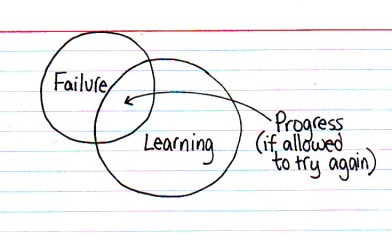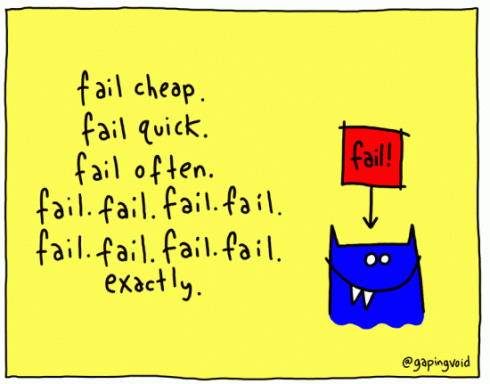 I was on the phone the other day to an organisation, discussing the challenges of maintaining culture at a time of growth, when I was asked if I could give “a couple of examples where organisations had failed to do so successfully“. Having shared a couple of examples where I felt that had been the case, it got me thinking how we continue to only discuss failure in closed conversations, back-channel discussions, confidential peer-to-peer programmes, internally within organisations, or privately over drinks. And yet it is a truth universally acknowledged that the best learning comes from mistakes, missteps and failures; indeed, that was why the question was asked on the call: “can we learn from other organisations, so we can improve and do things more effectively“….
I was on the phone the other day to an organisation, discussing the challenges of maintaining culture at a time of growth, when I was asked if I could give “a couple of examples where organisations had failed to do so successfully“. Having shared a couple of examples where I felt that had been the case, it got me thinking how we continue to only discuss failure in closed conversations, back-channel discussions, confidential peer-to-peer programmes, internally within organisations, or privately over drinks. And yet it is a truth universally acknowledged that the best learning comes from mistakes, missteps and failures; indeed, that was why the question was asked on the call: “can we learn from other organisations, so we can improve and do things more effectively“….
Of course, it’s completely understandable why failure stays mostly behind closed doors. When something goes awry (be it big or small), people want to move on from it, not do a speaking tour on the ins and outs of the mistakes they made. There may also be reasons behind something not working that either can’t be made public or are simply due to unavoidable external circumstances. And it is also rare that something is simply “a failure”; it’s rarely that black and white or binary in nature, and the reality is often messier, greyer and more mixed: an organisation that closes down may have achieved huge impact (and a huge legacy), while an entrepreneur may make both mistakes and inspired judgements in close proximity. How often do you look back and say you would go back and do it differently if you could?
I’m intrigued by this relationship between failure and success: the fact that small ‘failures’ actually help us learn and achieve more, and achieve it more effectively….and avoid ‘big’ failures. This is something at the heart of Tim Harford’s book Adapt…which is an illuminating read for those interested in business and problem-solving alike. Harford’s central thesis is that the way to solve complex problems is to experiment and adapt. Or, more precisely, to try new things in the sure knowledge that some will fail; to make those failures survivable; and to evaluate (aka knowing when you’ve failed and why).
This starts to give us an indication of how we can build failures and learning into our organisational processes, to really get to a position where continuous improvement (and incremental innovation) is a reality not an aspiration. And to a point where this moves beyond piloting and testing the market by individual entrepreneurs who are learning-by-doing; instead, we need to move to a place where this is built into our internal systems and processes.
As for the public side of failure, maybe it just needs reframing, or included in future awards ceremonies: best comeback, most resilient social entrepreneur, most dignified exit, finest legacy….until we get to these levels of acceptance, we’ll continue to not only miss out on the richest, most practical learning but also risk giving an overly positive (or narrow) view of a sector that suffers the same range of mishaps, closures, successes and comebacks as the commercial world.

When I worked for a multi-national retailer, I tried to convince my director that we should actively acknowledge the contribution that ‘failure’ makes to our learning. I wanted the first project manager who declared ‘this project is no longer viable and this is what we have learned’ to be applauded, not demonised. I got nowhere. Instead a blame culture prevailed.
We work hard to make the Knowledge and Innovation Network a place where members can share from ‘failed’ initiatives in a ‘safe’ environment. We have seen many examples shared between members that would never be aired in a public forum. KIN has an annual awards event; I’m going to suggest we include a couple of your gongs.